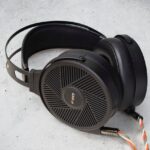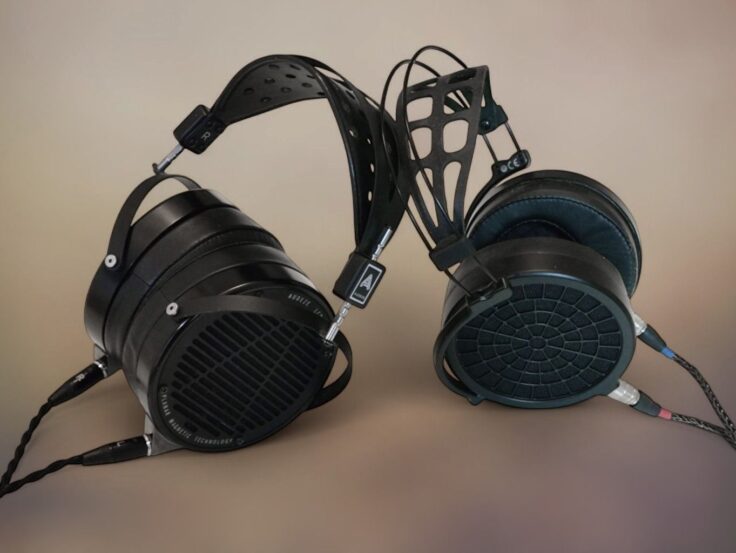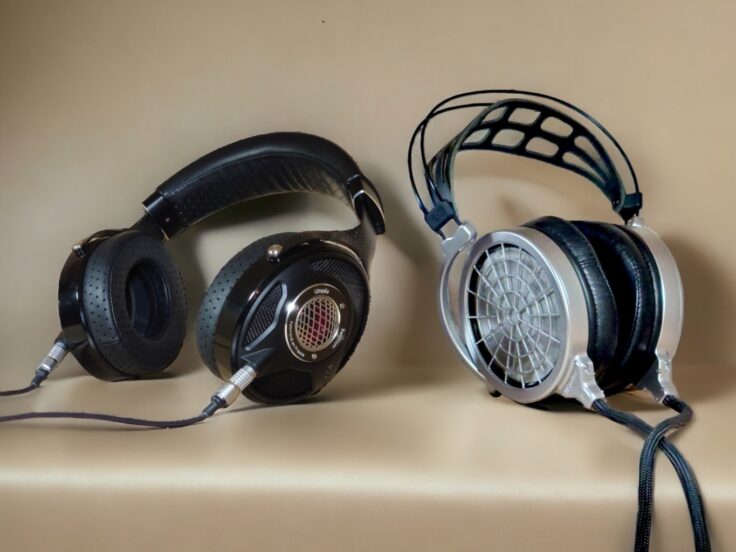The Ether CX (900 USD) is a Drop collaboration with Dan Clark Audio, formerly known as MrSpeakers. Based on the Ether C closed-back planar magnetic headphone from 2015, the Ether CX launched in 2019 and has been a successful long-term offering for Drop. Despite the rebranding of MrSpeakers to Dan Clark Audio, the headphone is still available under the original MrSpeakers name, although the headband says Dan Clark Audio.
This is a review of the Ether CX using ZMF Universal Lambskin pads, not the stock pads. The stock pads are often criticized for becoming thin with wear. They also have a small rectangular opening that increases pad surface and skin contact, making them noticeably warm in use. In contrast, the ZMF pads have a large oval, almost circular, internal opening and firmer foam, offering improved comfort. The ZMF pads are lambskin, the stock are pleather.
With the ZMF pads, I need to use a specific tuning pad or filter in front of the driver to avoid the sound becoming too crisp and dry. That said, the Ether CX is designed with filter use in mind and comes with several stock tuning pads—more on those later. I’ll also compare a few alternative third-party pad options.

ETHER CX SPECIFICATIONS
- Brand: Drop + MrSpeakers
- Drivers: V-Planar planar magnetic, matched +/- 1.5 dB 30 Hz–5 kHz
- Headband: NiTinol memory metal
- Ear cups: Carbon fiber
- Ear pads: Japanese protein leather, removable
- Ear cup diameter at pad ring ca.105 mm
- Impedance: 23 ohms at 1 kHz
- Input sensitivity: 92 dB at 1 mW
- Noise isolation: -20 dB at 1 kHz, -40 dB at 6 kHz (per InnerFidelity)
- Input connector: Hirose 4-pin
- Cable: DUMMER 4-pin XLR, 6’5″ (2 m) long
- Made in San Diego, CA
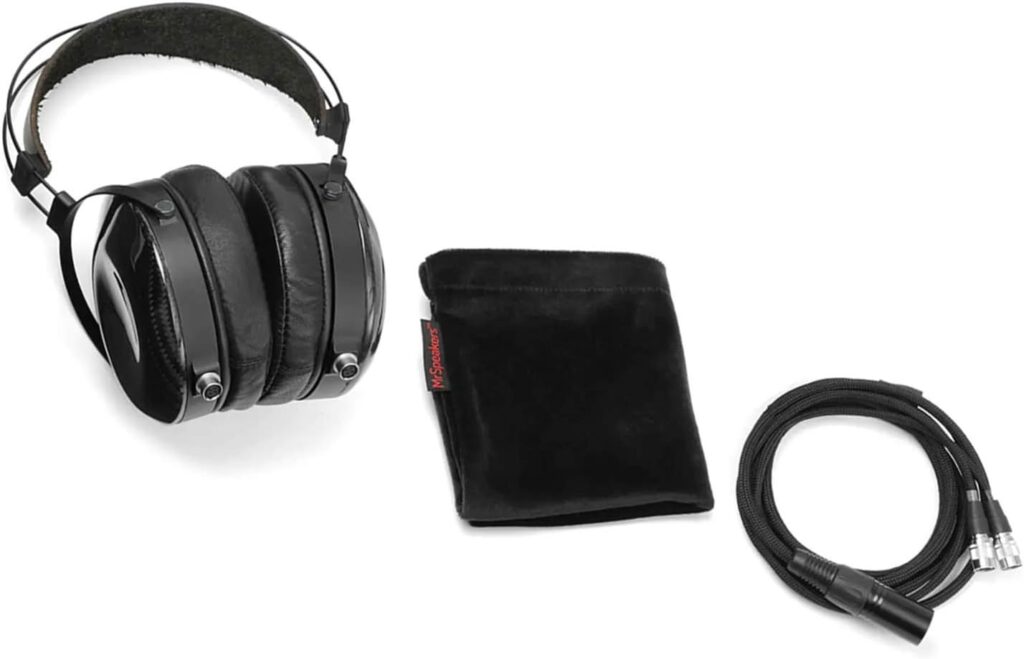
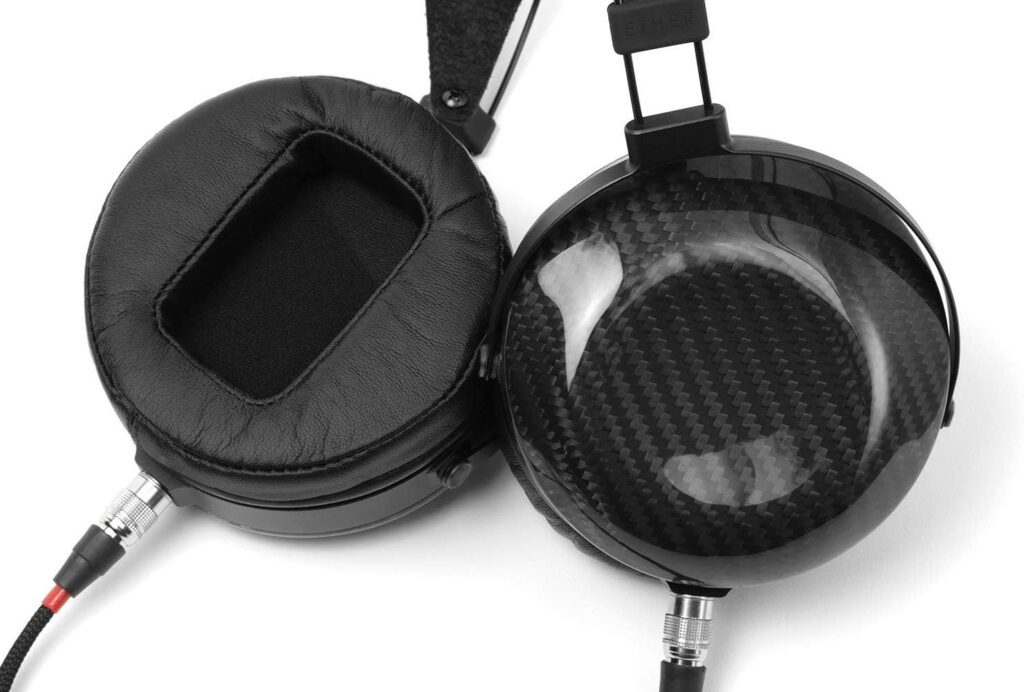
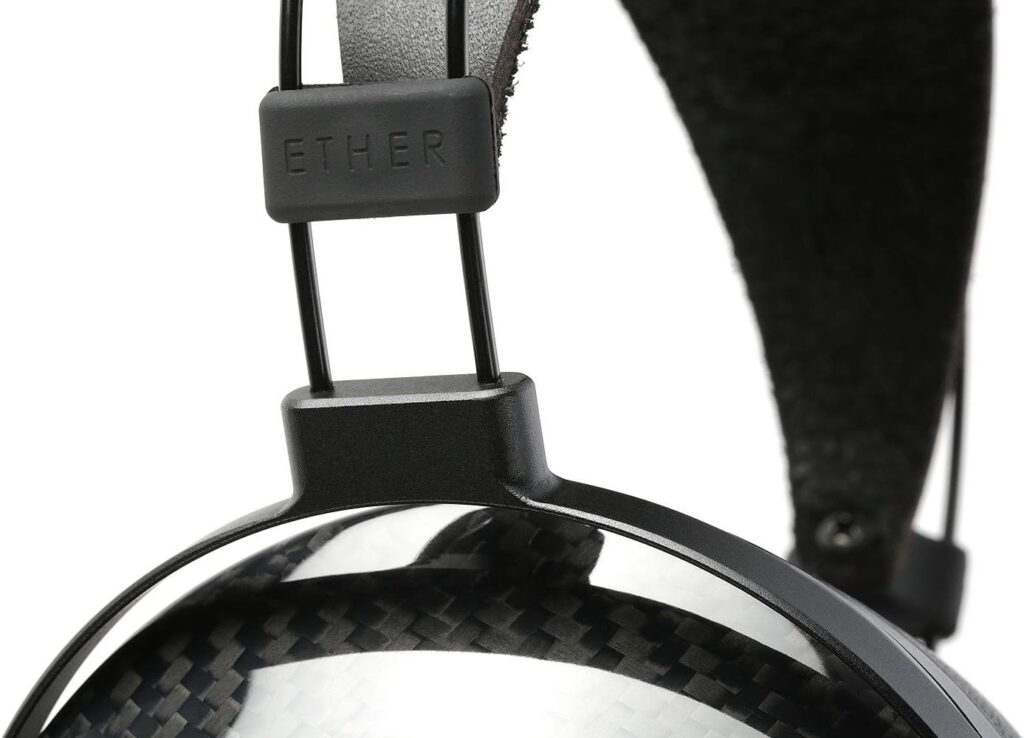

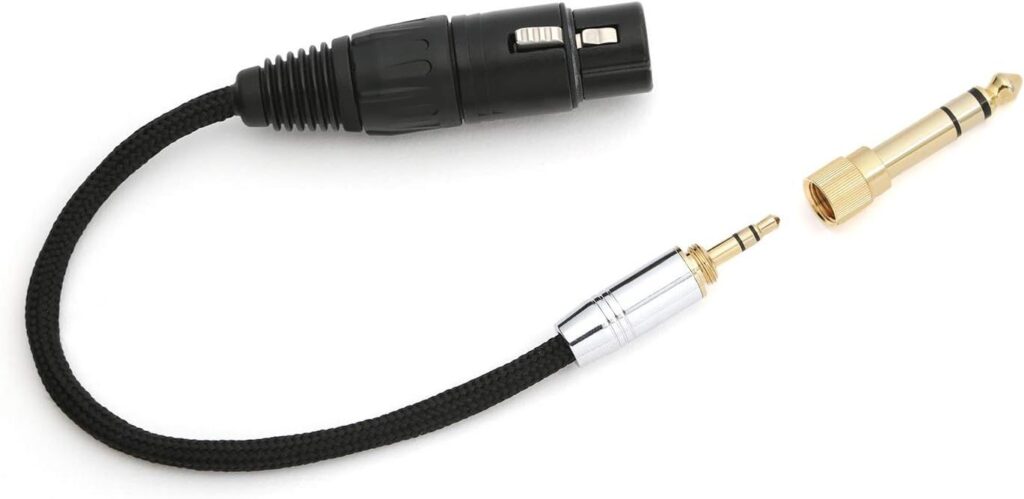
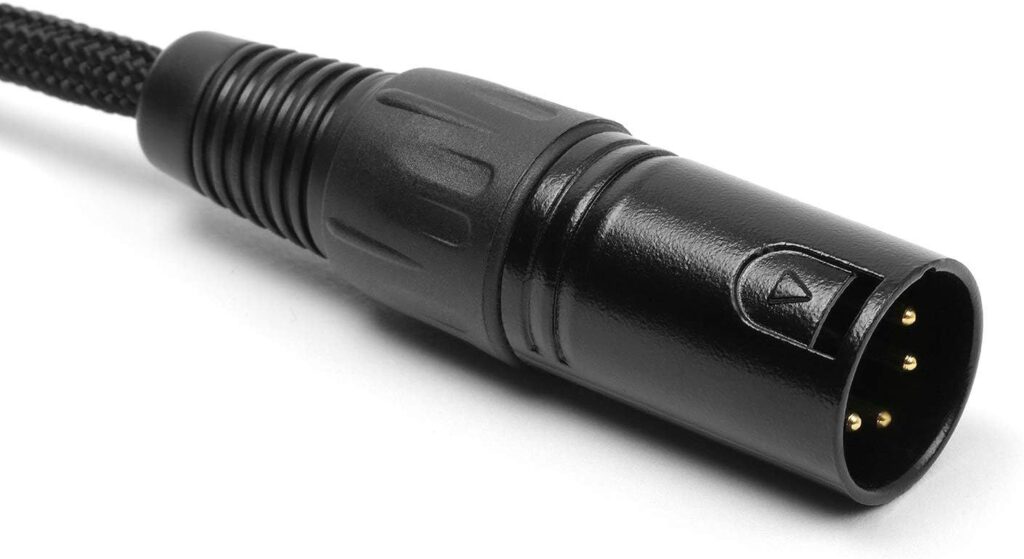
IN THE BOX:
- Headphones
- MrSpeakers 4-pin XLR to ⅛ in (3.5 mm) to ¼ in (6.35 mm) adapter, 10″ (25 cm) long
- Soft velvet bag
- Tuning filters/inlets/pads
Current price and availability
- Amazon: Ether CX

PADS
The stock pads weren’t my favorite part of the Ether CX. The faux leather is nice enough but the foam gets flat after some time and I no longer have them. They also have a lot of contact surface that makes them feel hot. However, I’ve compared a few third-party options and found the ZMF Universal pads to sound the best, especially when used with a tuning pad/tuning filter. Here are some by examples, starting with my favourite:
ZMF Universal Lambskin
The Ether CX sounds very good with the ZMF Universal pads—tight and spacious—but they need a tuning pad/filter in front of the driver to avoid sounding dry.
- ZMF: Universe Pads
Brainwavz XL Micro Suede
These pads sound a bit less bright and dry than the ZMF pads, offering a slightly warmer and more intimate presentation. No need for a tuning pad/filter. The soundstage is slightly smaller than with the ZMF pads.
- Amazon: Brainwavz XL Micro Suede Pads
AHG ORION Sheepskin Pads
These leather pads from Accessory House Global (AHG) sound quite similar to the ZMF pads but use stiffer foam, making them less comfortable. They’re compatible with the Fostex TH-900.
- Amazon: AHG ORION Full Sheepskin Pads
Tuning headphones to your liking with pads can be very rewarding, but also expensive. If you’re on a tight budget and want to try many pads, AliExpress is your friend.
As the diameter of the Ether CX is 105 mm, all standard circular pads 100-110 mm diameter with a lip should work, like e.g. pads made to be compatible with Fostex TH900.
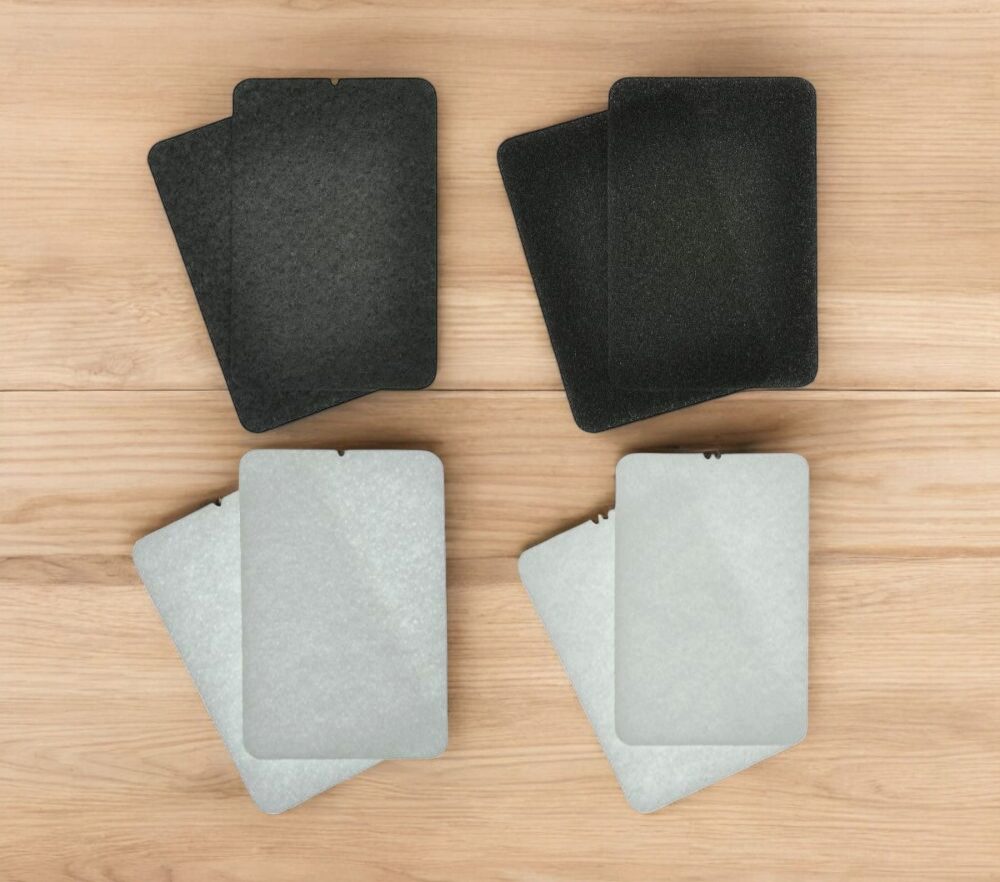
TUNING FILTERS – FELT AND FOAM
As mentioned, tuning filters aka inlets or pads, are included and part of the DCA Ether family-experience. There are four types: two pairs of white stiff felt (marked with one or two notches), one pair of black stiff felt, and one pair of thin foam pads. These are shaped to fit into a dedicated slot in front of the driver, inside the pad. They can be combined as desired, and you can also use your own tuning materials—typically foam or felt.
- DCA Ether Tuning Kit link here.
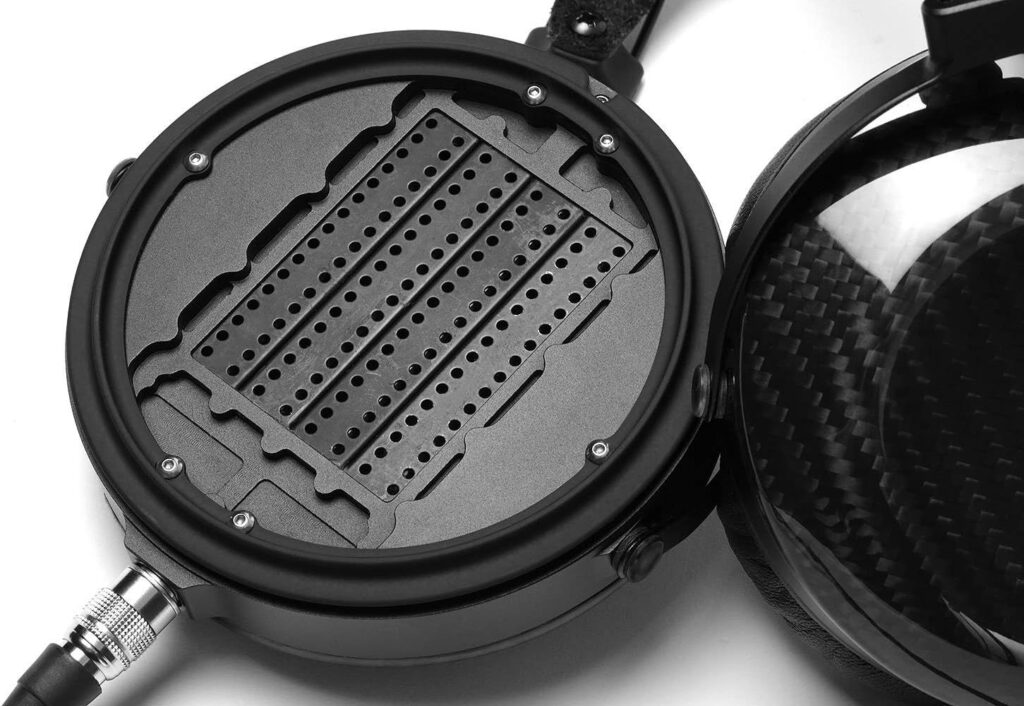
Experimenting with the tuning pads on the CX is interesting. The white “two-notch” filter, intended to give the warmest sound, does add warmth, but at the cost of spatial qualities, and the midrange remains somewhat dry. The thin foam didn’t do much. The black felt was possibly the best of the four to my ears. The white “one-notch” filter combined with the thin foam pads also sounds quite good.
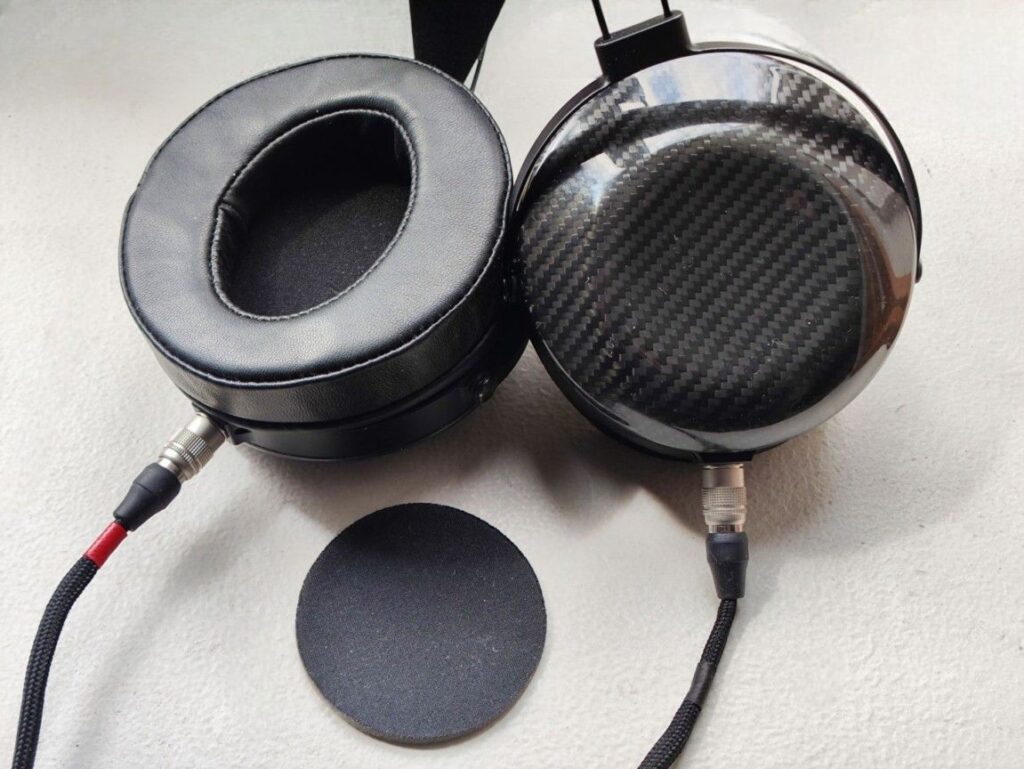
However, I had a pair of AKG foam discs from the K270/K271, which I simply stuffed inside the ear pads. To me, this sounded better than any of the supplied filters—the spatial qualities were preserved, and the dryness was gone.

Trying to recreate the results I got with the AKG foam, I tested various combinations. Eventually, I found that combining the black felt and the black foam pads came very close. I still prefer the AKG foams—but only slightly.
So, my preferred filter remains the AKG K270/K271 foam pads, mounted just inside the pads themselves. All impressions described in the rest of this review are based on using those foam pads in combination with the ZMF Universal Sheepskin pads.

AMPLIFICATION
I’ve tried the Ether CX with a range of headphone amps, and while many are powerful on paper, they tend to sound a bit tame and lacking in dynamics at moderate to low volumes. At higher volumes, they perform very well, but that’s not sustainable. To be honest, I wasn’t fully sold on the Ether CX until I tried it with the Schiit Vidar 2 power amplifier using Hifiman’s HE adapter. You get close with a reasonably powerful headphone amp, but not quite all the way there.
In other words, the Ether CX requires a very powerful amp to sound its best, especially at lower volumes. While using speaker amps with headphones can be controversial, once you hear a headphone like this benefit from the large capacitors and increased dynamic range, it becomes clear that, in some cases, it really does matter.

HIGH POWER LISTENING IMPRESSIONS
All impressions in this section is from using the Ether CX in combination with the Vidar 2 power amplifier and the Hifiman HE adapter.
Teardrop by Massive Attack
The bass is very high in quality—textured, tactile, and extends deep—but the quantity is modest. The soundstage is large for a closed-back headphone, with good depth and a strong sense of three-dimensionality. Percussion is very snappy and detailed, and vocals are clear and well-presented.
All For Us by Labyrinth
The bass is just right in quantity—tight, textured, and never overwhelming. Vocals are very nice, with plenty of detail, and percussion is extremely snappy and well-defined.
Bergen Open by BMX
The presentation is open, dynamic, and spacious, with excellent separation between instruments. The electric guitar carries some warmth but emphasizes texture. The trumpet sounds crisp and open, while the percussion is extremely dynamic—everything comes across as very snappy and precise.
Bijou Voyou Caillou by Florian Pellissier Quintet
Bass is very present and highly tactile. Vocals aren’t as warm as I’m used to but carry great nuance and detail. Percussion is a bit dry, yet extremely snappy and physical.
Can’t You See by Susan Wong
The guitar is crisp and well-articulated. Susan’s voice is rich in texture and comes across as intimate, though more neutral than lush. Separation is excellent.
Graceful Touch by Tord Gustavsen Trio
The piano is very crisp and stands out clearly in the mix. Percussion is detailed and nuanced, while the standing bass is well-balanced with excellent texture. Instrument separation is outstanding.
Sit Down, Stand Up by Radiohead
The electronic percussion at the center of the image is extremely tight and tactile. There’s a strong sense of instrument separation, and the vocals become quite intense during the build-up.
As Before by Olga Konkova
The immediate sense of space and three-dimensionality is striking. The cajón drum is extremely snappy, though not particularly rich in the lower octaves. Vocals are clear and slightly bright, while the piano is crisp with excellent texture.
It Could Be Sweet by Portishead
There’s no problem handling the bass without distortion. Percussion is snappy, and reverb is easily perceived. Vocals are clear and slightly crisp, with soft but just slightly present sibilance.
Sujet Tabou by Renaudin and Cahours
This duo of acoustic guitar and percussion sounds terrific. The dynamics of the percussion on the Ether CX powered by the Vidar 2 amp are insane—among the best I’ve heard. The guitar is crisp and richly textured.
New Life Baby Paris by Mala
Insane dynamics on the percussion with a great sense of space. Bass is excellent—deep, textured, and tactile, yet polite in quantity.
Young Vivaldi by Modo Antiquo
Strings have excellent texture and a very pleasing timbre. They sound natural—neither too crisp nor too thick.
Fata Morgana by Spiritbox
Time for some progressive, industrial-sounding metal. The separation is excellent, with great dynamics and detail, all nicely balanced.
Escape Route by Boris Blank
Again, the dynamics and separation stand out the most. Bass is polite in quantity but high in quality, trumpets sound crisp, and percussion is snappy.
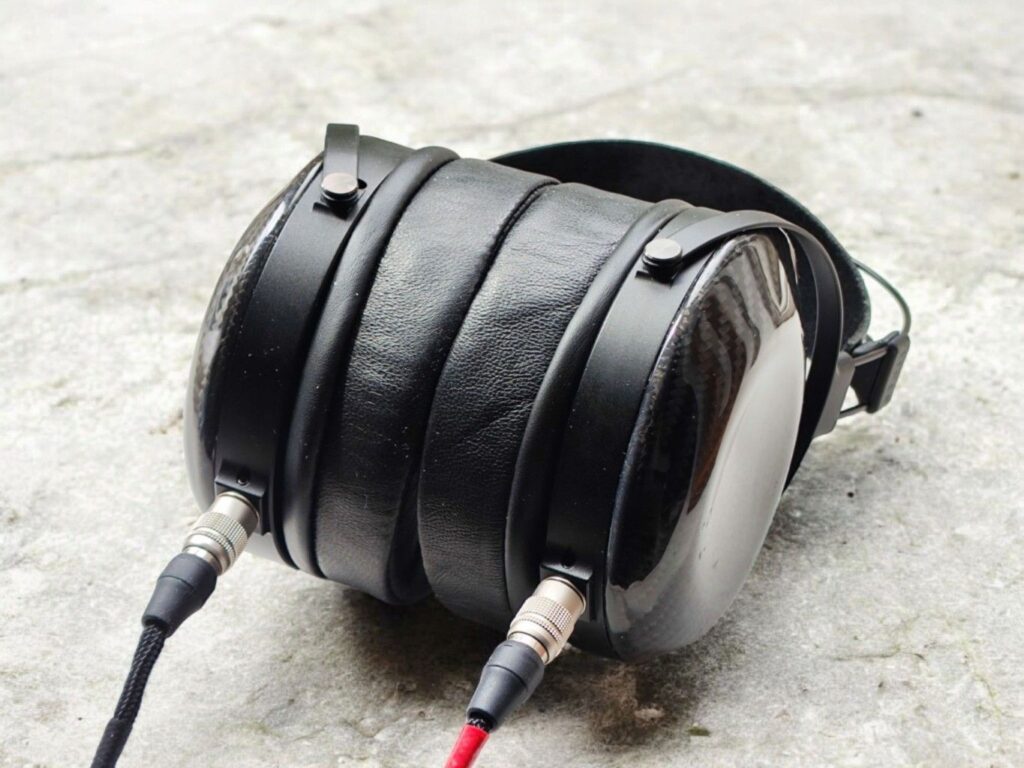
WRAPPING IT UP
Sound Signature
The Ether CX is a neutral to bright-sounding headphone with a linear and very deep bass extension.
Treble
The treble is fast, crisp, and clear.
Midrange
The midrange is crisp and textured rather than lush and full-bodied.
Bass
The bass is very linear, with no lift in quantity. However, the quality is outstanding—extremely tight, textured, and well-extended.
Soundstage and Imaging
The soundstage is open for a closed-back. Instrument separation is excellent, with a superb sense of three-dimensionality and image depth.
Detail, Dynamics, and Timbre
The detail level is very high across the entire frequency spectrum, and the dynamics are nothing short of stunning. The timbre can sometimes feel a bit dry, but with the right filter—and especially a powerful amp—it stays balanced and engaging.
CONCLUSION: Given sufficient power, the Ether CX delivers a tight, dynamic, and detailed sound with crisp tonality and very linear bass response. I personally preferred using a fairly thick foam filter in front of the driver to achieve a slightly warmer sound.
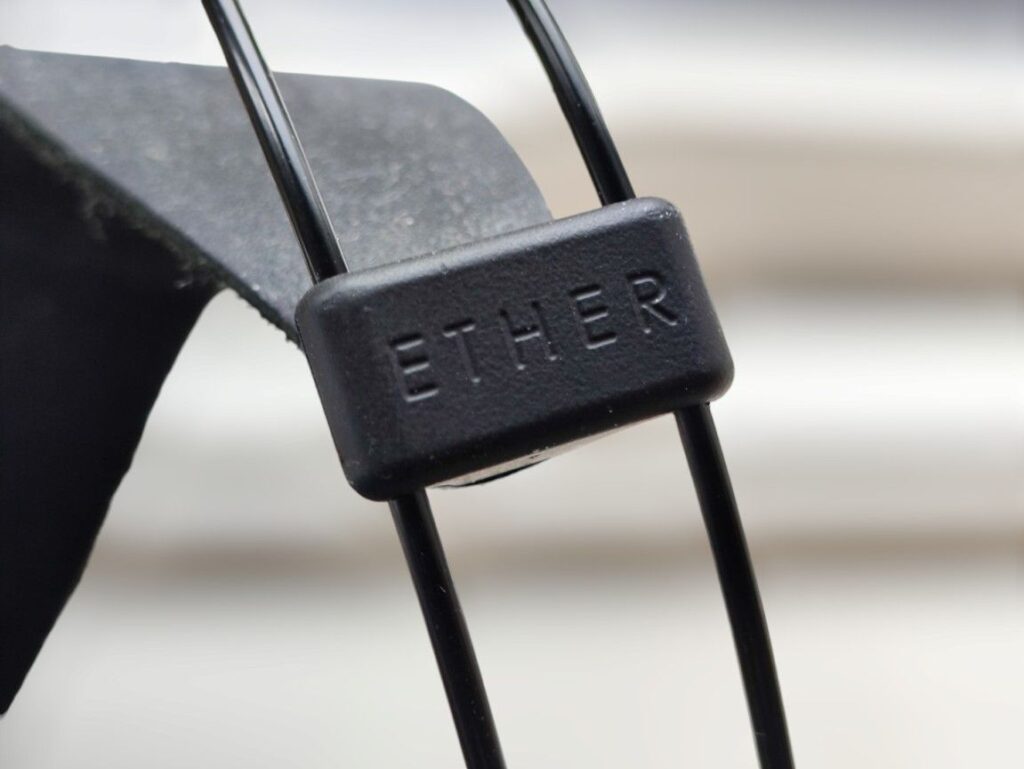
COMPARISONS – NO FILTER
In the above sections, I described how I experience the Ether CX in my favourite configuration. Below, however, are some comparison impressions using a normally powerful amp and no filter in front of the driver. As mentioned, I find the Ether CX to underperform with standard headphone amps unless the volume is pushed above my comfortable listening levels. For context, I’ve included some notes on the CX’s performance with the Schiit Vidar 2 for reference. The Schiit Vidar 2 makes the Ether CX sound great no matter the volume.
The headphone amplifier used is the excellent Questyle CMA800R, a discontinued but highly regarded model. I chose it because of has a slightly warm tonality, to compensate for the Ether CX ‘s tendency to sound a bit bright and dry. While it’s not especially powerful, it’s a solid all-round performer.
DENON D5200 vs ETHER CX
Using the Questyle amp with both headphones, the D5200 sounds meatier compared to the CX. Its bass isn’t as tight, and the spatial qualities aren’t as impressive, but the D5200 is still more enjoyable in several ways. It’s warmer and fuller, yet maintains good instrument separation, imaging, and detail. In direct comparison, the CX sounds distant and cold—its clean presentation is fascinating, but it feels too dry and clinical for my taste.
Using the Ether CX with my preferred filter and the Vidar 2 amp, the CX sounds slightly warmer than before, and the Vidar’s power brings out its technical strengths more clearly. While the D5200 still sounds fuller and warmer in an appealing way, the CX is now several steps ahead in most respects.
DENON D9200 vs ETHER CX
Basically the same difference as with the D5200. The CX is more distant and dryer even with the tuning pads. In terms of sheer resolution, bass quality and technicalities, the CX holds up very well. With the tuning pads removed, its spatial qualities really come through. In that regard it is better than the D9200. It’s the tuning and especially the drier midrange that makes the CX harder to fall in love with.
With the Ether CX using my favorite filter and the Vidar 2 amp, the CX sounds more neutral and less dry. The Vidar 2’s power brings out its technical qualities more vividly. While the D9200 feels more lush and perhaps more musical in the midrange, and definitely is technically better than the D5200, the CX delivers even tighter bass, better imaging, and exceptionally good dynamics.
FOSTEX TH900 vs ETHER CX
The Fostex TH-900 also lacks presence in the midrange but offers significantly more bass quantity. The Ether CX delivers excellent bass quality and extension but is more modest in quantity compared to the TH-900. Both headphones have great spatial qualities. The TH-900’s midrange is recessed but doesn’t feel as dry as the CX without tuning pads. Adding tuning pads improves the TH-900’s midrange, making it relatively thicker, though at a slight cost to soundstage. While the TH-900’s midrange isn’t my favorite, it’s better than the CX’s, likely helped by its stronger bass presence. It sounds more alive, for lack of a better word.
Using the Ether CX with my favorite filter and the Vidar 2 amp again helps reduce dryness while enhancing technical performance, making me prefer it over the TH900.
BEYERDYNAMICS DT1770PRO vs ETHER CX
These headphones have quite different presentations. The DT1770PRO is very clear, more vivid and articulate than the CX, with brighter treble and more energy. It offers good spatial qualities and separation, though its soundstage isn’t as deep or wide as the CX’s. The CX’s bass, being planar, is cleaner and more textured, while the DT1770PRO delivers good bass with more warmth. The DT1770PRO’s midrange is crystal clear, whereas the CX’s midrange sounds a bit dull and flat in comparison.
Again, the Ether CX improves significantly with my favorite filter and the Vidar 2 amp, reducing midrange dryness and enhancing technical performance—ultimately making me prefer it over the DT1770PRO.
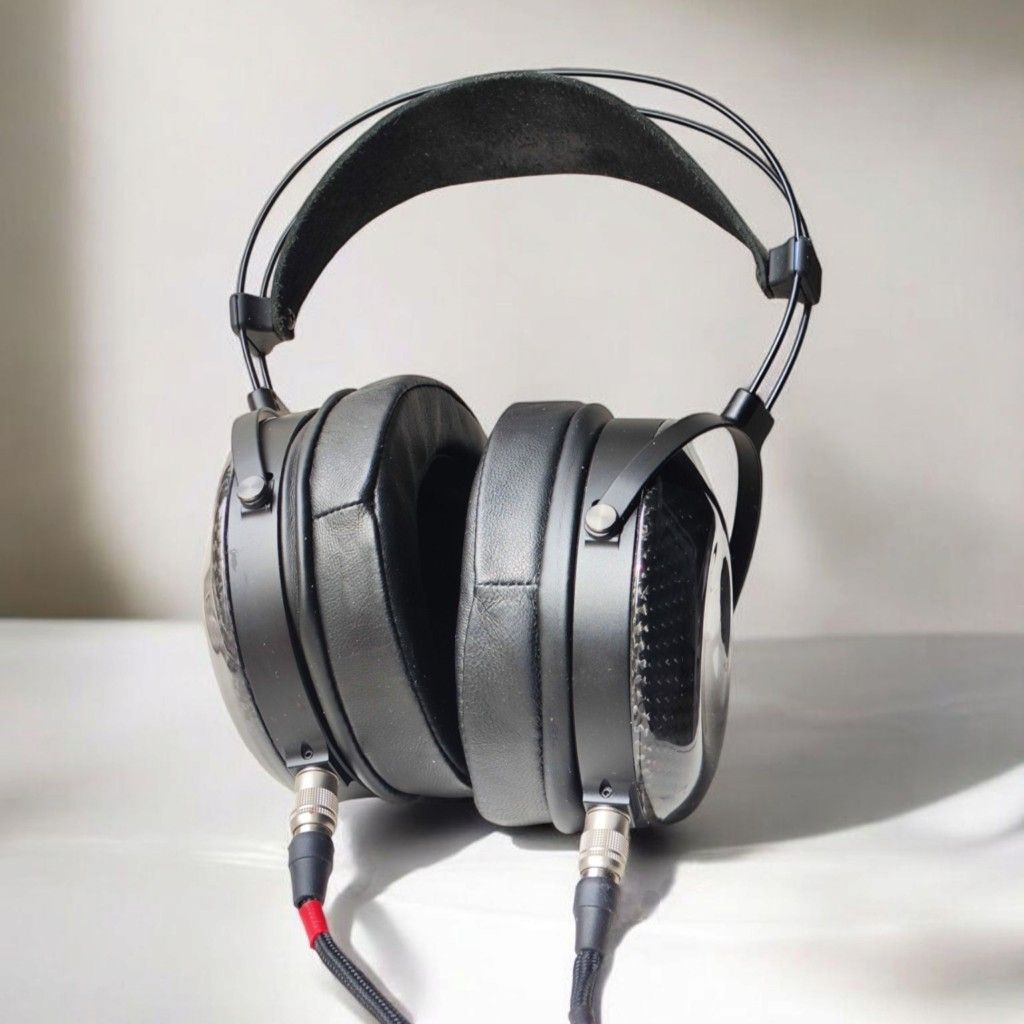
CONCLUSION
To become a headphone I can truly recommend—and for it to suit my personal preferences—the Ether CX needed some help. I experimented not only with pads, but also in combination with various filters. I eventually found a third-party foam that reduced the midrange dryness that had initially bothered me.
Standard headphone amplifiers drive the Ether CX well, but to reach its full potential, especially at low to moderate volumes, I had to turn to the Schiit Vidar 2 speaker amp to achieve the absolute best control and dynamics at comfortable listening levels.
That said, given sufficient power and the right pads and filter, the Ether CX delivers an extremely tight, dynamic, and detailed sound with crisp tonality and a very linear bass response. It might not be the newest kid on the block, but with some effort and the right setup, the Ether CX can deliver world-class sound.
Thanks for reading. You can support us by purchasing anything using any of our affiliate links.
- Amazon: Ether CX
Any purchase you make on Amazon or Linsoul with any of our affiliate links will give us a small provision at no cost to you.
We only get a provision for items that are not returned, so there’s no incentive for us to recommend something that’s not good.
Linsoul : Headphones, Earbuds, Wireless Earbuds, Desktop DAC/AMP, Portable DAC/AMP, Digital Audio Players,
Amazon: Headphones, IEMs, Headphone Amplifiers, Home Audio or Anything else.
.
If you enjoyed this article or other content on The Headphoneer, you might consider leaving a small donation to keep this website up and running. No donation is too small. Thanks for supporting us!
If you like our work please follow us on Instagram, Facebook and Twitter , it will help us grow. Sharing is caring 🙂




